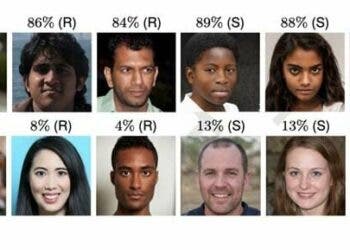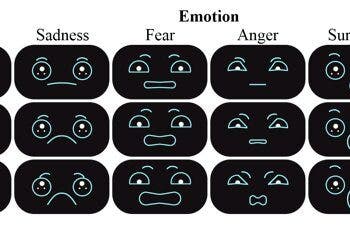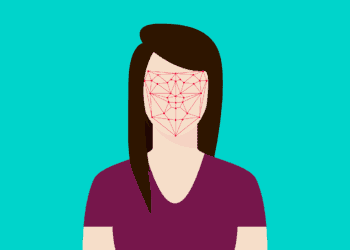Although they keep us safe and were invaluable during the pandemic, masks may nevertheless influence how we socially interact with one another, new research suggests.

Obstructing the bottom halves of our face can impact others’ ability to understand and empathize with some of our emotions or pick up on certain social cues, a new study reveals. Although not all emotions are affected by this — those that are primarily conveyed through the eyes are a notable exception — the authors explain that it is still important to understand these effects on our collective social interactions.
Something hidden
“Our study suggests that when the movements of the lower part of the face are disrupted or hidden, this can be problematic, particularly for positive social interactions and the ability to share emotions,” explains lead author Dr. Ross Vanderwert, from Cardiff University’s School of Psychology. “People tend to automatically imitate others’ facial expressions of emotion when looking at them, whether that be a smile, a frown, or a smirk. This facial mimicry — where the brain recreates and mirrors the emotional experience of the other person — affects how we empathize with others and interact socially.”
“Wearing a face mask continues to be vital to protect ourselves and others during the COVID-19 pandemic, but our research suggests this may have important implications for the way we communicate and interact.”
For the study, the team recorded the brain activity levels of 38 individuals using electroencephalography while they watched video recordings of people showing fearful, happy, or angry expressions. A collection of video footage of inanimate, everyday objects was used as a control. Participants were asked to watch half of these videos while holding a pen between their teeth, and the other half without the pen.
The aim of the study was to analyze what effect face masks have on neural mirroring. This is a process that our brain undergoes automatically in reaction to actions observed in another person. It is meant to help us better coordinate with others during simple tasks, and to facilitate social bonding by giving us insight into the emotions of those around us.
According to the findings, participants who could move their face freely (i.e. when they were not holding the pen between their teeth) showed significantly higher levels of neural mirroring when observing emotional expressions. They showed no mirroring when viewing everyday objects, as was to be expected.
However, when they were holding the pen between their teeth, they exhibited mirroring at neither happy nor angry expressions — but did so when looking at fearful ones.
“For emotions that are more heavily expressed by the eyes, for example fear, blocking the information provided by the mouth doesn’t seem to affect our brain’s response to those emotions. But for expressions that depend on the mouth, like a friendly smile, the blocking had more of an effect,” said second author Dr. Magdalena Rychlowska, from Queen’s University Belfast’s School of Psychology.
“Our findings suggest that processing faces is a very challenging task and that the brain may need more support from, and rely more heavily on, our own faces to support the visual system for understanding others’ emotions. This mirroring or simulation of another person’s emotions may enable empathy; however, up until now the neural mechanisms that underline this kind of emotion communication have been unclear.”
The findings don’t dramatically change anything in our lives, but they can benefit us on a personal level to understand how certain elements impact how we interact with others and how they, in turn, interact with us. It’s also useful to know exactly what that effect is, so we can do our best to counteract it or, alternatively, find ways to make it benefit us. The authors note that face masks can produce this effect as well, by obscuring the bottom half of our faces.
Beyond those direct implications, the study also helps us better understand some of the nuances of human interaction, the automated mechanisms in our brains that make us human.
The paper “Altering Facial Movements Abolishes Neural Mirroring of Facial Expressions” has been published in the journal Cognitive, Affective, & Behavioral Neuroscience






